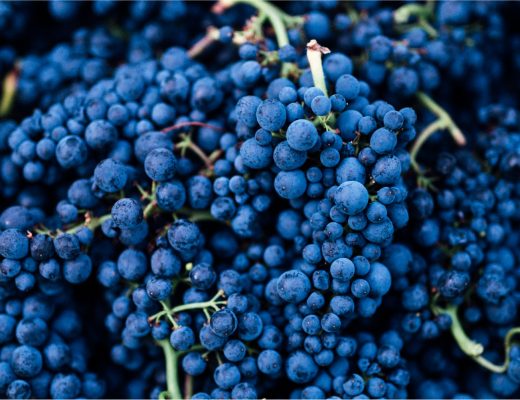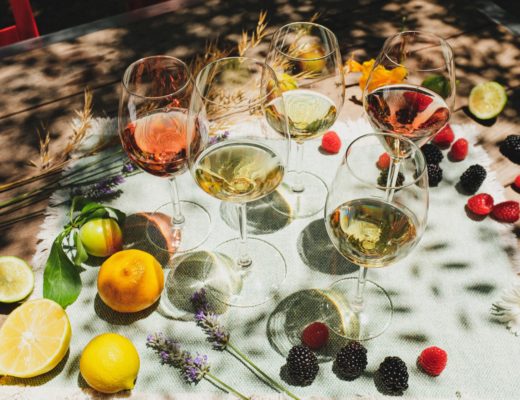Don’t let Japanese characters and ten-syllable names discourage you—sake is easy to understand, taste, and enjoy. At Wine Access, we specialize in connecting people and places through extraordinary wines, and sake is one of the most nuanced, expressive beverages on the planet. While it might seem daunting, enjoying sake is as easy as opening the bottle—and you don’t even need a corkscrew.
How it’s Made:
With over 2,000 years of history, sake rivals wine for complexity, though its brewing process is slightly more complicated.
Sake is made of four ingredients: water, rice, yeast, and Koji, a special ingredient that converts rice starches into sugar. These four ingredients, their sources, and the way they interact combine to give high-quality sakes their unique range of flavors and layers of complexity. Like wine, sake gets its inimitable qualities from the terroir of the rice and water that combine during fermentation.
Water is the most crucial ingredient in sake production because the mineral content (or lack thereof) in the water determines the texture of a sake. Regions with hard water produce sakes that are richer, layered, and more complex in style—like full-bodied wines. Sakes made with soft water are silkier and more elegant (like my favorites from Japan’s Niigata prefecture).
The rice used in sake production isn’t the same as you’d eat for dinner either. Like wine grape varieties, certain strains of rice have more starch which translates to more alcohol and a wider range of flavors in finished sakes.
You can think of each grain of rice like an uncut gem, which is then polished until it reaches a certain grade, which designates the quality of sake. In essence, the more the outer layers of the grain are taken off, the more delicate and pure the sake is. At the same time, removing less of the rice yields a fuller-bodied sake with more flavor.
Yeast, in addition to producing sake’s signature alcohol, adds incredible aromas to sake. Some yeast strains give flowery notes and while others add citrus or fruity aromas. Combined, these ingredients give sake its wide range of inimitable flavors and aromas in the glass. Once bottled, it’s all about choosing the right bottle for the occasion and your personal preferences.
Finding the Perfect Sake:
On menus, it’s no exaggeration to say sake lists are intimidating! But, if you know just a few terms, it doesn’t have to be. Sake names are organized like wine on most menus, meaning the producer’s name will come first, followed by the style of sake, and then perhaps the region or any special notes.
If you’re just getting started, look for style indicators to show what type of sake you’ll enjoy the most. When in doubt, don’t be afraid to ask the server for help!
First, sake is categorized by the level of polishing given to each grain of rice.
- Junmai: Up to 30% polished, leaving lots of flavor in the sake. A great choice for lovers of full-bodied, complex wines.
- Ginjo: Up to 40% polished, leaving a medium-bodied sake that’s more delicate. These offer a great option for those who like delicate, light-to-medium bodied wines.
- Daigingo: The most polished grains of rice go into these sakes which make them delicate, floral, and pure. They’re light-bodied and a great option for anyone looking for a soft, light-bodied sake with lots of nuance.
The second part of a sake name comes from the processing (or lack thereof) that happens after the sake is brewed.
- Genshu: Genshu means the sake is undiluted, leaving it with a higher alcohol content and more flavor.
- Nama: Indicates an unpasteurized sake, which will again have more vibrant flavors.
- Nigori: Nigori means the sake will be cloudy, leaving it a bit sweeter and more creamy.
- Muroka: Indicates an unfiltered sake.
- Tokubetsu: Tokubetsu is the equivalent of “reserve” on wine labels. This is the producer’s way of indicating that the release or bottling is special in some way.
There may be additional words on sake labels, but if you can remember just a few of these phrases, ordering becomes a breeze.
Exploring Sake: Start with the Napa of Japan
Over the years, and through tasting thousands of sakes in the US and Japan, I’ve become drawn into the Niigata Prefecture which is home to the largest concentration of producers in the whole country of Japan.
I first came across Takeda Shuzo’s sakes years ago while I was running the beverage program for the Morimoto Restaurant Group. His style, like no other, manages to deliver richness, a fruit-forward mid-palate, and a long and pleasant citrus finish.
When I visited his brewery I was captivated by the quaint site. Production is small and the team consists of Takeda San, his son and a couple experienced brewers that manage to make everything in an artisan fashion. His featured Katafune Tokubetsu Honjozo Genshu has been awarded several medals and trophies including Best Sake and Gold medal at the Las Vegas Global Spirits Competition, which I had the honor to judge. They’ve also won the highest award not once but twice from the International Wine Challenge. This sake performs ideally with richer dishes from grilled cheese sandwich with black truffles to grandma’s veal piccata recipe.
Another compelling sake producer is Takachiyo. At first, I noticed the long lines around their booth at a sake competition composed mainly by younger sake drinkers, which piqued my curiosity. I was told Takachiyo is revolutionizing the sake world with their 59 lineup showcasing several chapters of Junmai Ginjo Nama all using the same milling percentage on the rice, 59% and same sake yeast and each one featuring a different rice strain. I tasted through the whole line up the last two years and managed to secure a small amount for our members of my personal favorite.
The Takachiyo 59 Chapter 7 Omachi sharp and lively with Meyer lemon notes, electric acidity, and a memorable finish. Only 96 bottles are available, direct from the brewery in Japan! In a Japanese Sake market where domestic consumption is decreasing due to the new generations opting for other beverages, it is heartwarming to see producers evolving to become more attractive and keep this art form alive. When it comes to finding the right pairing, this sake is ideal with baked butternut squash, persimmon salad, and even pan-seared halibut with a lemon sauce.
Although a newer player in the sake world, SOTO Sake is hands down the ultimate definition of Junmai Daiginjo exhibiting elegance, finesse and a floral character. In a world where Junmai Daiginjo prices are amongst the highest in the premium sake realm due to the lower yields and time-consuming methods required to make it, we managed to lock down a deal that is simply unheard of: 50% off for an incredible and memorable experience that will make you keep seeking more of this sake. The SOTO Junmai Daiginjo shines with oysters, beef carpaccio and salmon tartare.





